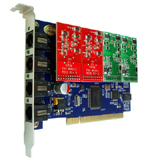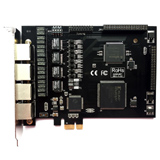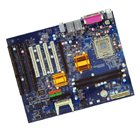

| Index |
|||||||||||
|
VoIP mobile requires a mobile handset that supports, at minimum, high speed IP communications. Most commonly this is using Voice over WiFi or VoWiFi, but the same protocols (typically SIP or jabber) can be used over any broadband IP-capable wireless network connection such as the various 3G standards, EVDO rev A (which is synchronously high speed - both high speed up and down), HSDPA or potentially WiMax. VoIP mobile will require a compromise between economy and mobility. For example, Voice over WiFi offers free service but is only available within the coverage area of the WiFi Access Point. High speed services from mobile operators using EVDO rev A or HSPDA with probably have better audio quality and capabilities for metropolitan-wide coverage including fast handoffs from mobile base station to another, yet it will cost more than the typical WiFi-based VoIP service.
VoIP mobile will become an important service in the coming years as device manufacturers exploit more powerful processors and less costly memory to meet the users' needs for ever-more 'power in their pocket'. Smartphones in mid-2006 are capable of sending and receiving email, browse the web (albeit at low rates) and in some cases watch TV. The challenge for the mobile operator industry is to deliver the benefits and innovations of IP without losing control of the network service. Users like the Internet to be free and high speed without extra charges for visiting specific sites versus other sites. Delivering mobile VoIP is a service that challenges the most valuable service in the telecommunications industry - voice - and threatens (or promises, depending on your views) the pace of innovation in the global communications industry. Technologies UMA - The Unlicensed mobile Access Generic Access Network, designed
to allow VoIP to run over the GSM cellular backbone Recent developments Throughout the early 2000s, Hewlett-Packard, Symbol Technologies and others have been innovators in WiFi-based handheld devices, as Personal digital assistant or handheld computers for warehousing and other applications. As successive generations of these devices gained in processing power and battery life, their potential use as a platform for mobile VoIP became practical. Using Microsoft Windows CE operating systems, and in the summer of 2005 companies such as FirstHand Technologies delivered practical client software to run on these class of WiFi only, Windows-based PDAs. In the summer of 2006 Nokia introduced a SIP (Session Initiation Protocol) stack and a VoIP client in the E-series dual-mode WiFi handsets (E60, E61, E70). These E-series handsets are intended for business users, but Nokia released a consumer handset, the N80 Internet edition, in November 2006. From a Wi-Fi network perspective there are several innovations that are imbedded into the most current offers of vendors WiFi networking equipment to enterprise and municipal service providers, that makes them particularly powerful in a mobile VoIP context. These innovations include support for strong encryption making the conversation in a Wi-Fi context quite private (IEEE_802.11i), support for Quality of Service for real-time services such as mobile VoIP (see IEEE_802.11e) and in some cases support for wireless access point to access point call handoff. Vendors leading these developments include Cisco, Aruba Networks, Trapeze Networks and Siemens AG. VoIP server vendors upon which VoIP service providers create the service including Nortel, BroadSoft and Sylantro have announced support, as early as January 2006 for dual-mode phones and the VoIP client from FirstHand Technologies, known as mobile Console. Enterprise IP PBX vendors including Siemens, NEC, Nortel, Avaya, Cisco and others have developed, tested or announced capabilities for mobile VoIP users interacting with their business IP-based phone systems. Sylantro Systems has recently experienced high turnover, including the loss of CTO, CMO, CFO, CEO in the last few months Broadsoft continues to be gaining in customers, partners and revenue, and is has indicated their intent to go public. Fixed mobile convergence brings the mobile VoIP element together with the public mobile phone service in a way that enables seamless roaming across these devices. Standards and alliances have been developed and technologies have been demonstrated as early as December 2005. Cisco and FirstHand Technologies demonstrated a WiFi to GSM handoff in San Jose, December 5, 2005. Recently T-mobile blocked the access to pure mobile VoIP numbers,
which got issued by truphone for the first time. The issue was
widely discussed in the press and truphone won the case in the
UK High Courts.
-ISDN BRI and ISDN PRI Services |




